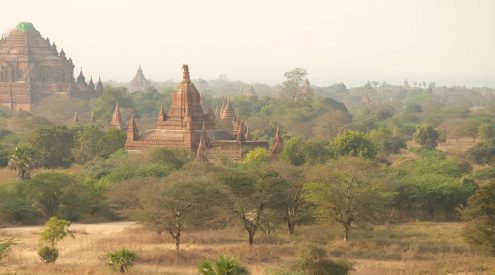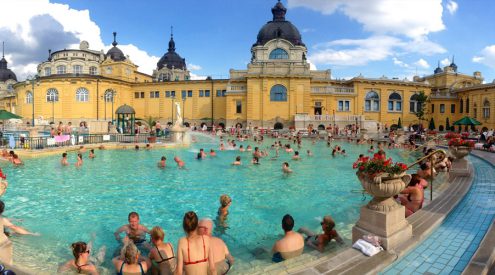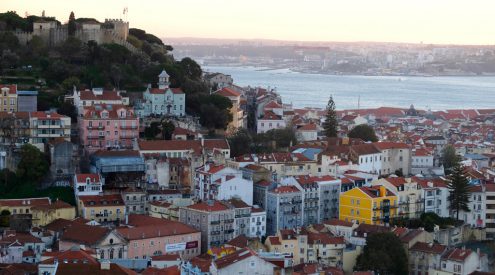I am new to Rome – I just landed yesterday, and do not have the lay of the land yet. Rome to me now is a blur of traffic, terracotta and tourists. Yet it is also a treasure-trove – full to the brim with ancient artifacts, art and architecture that, no matter how well travelled or worldly we might be, find a way to pull at the philosophical tenterhooks within each of our souls.
I think it is fitting then to start my discovery of Rome at its spiritual centre – the Vatican, home to the Pope, the Papacy and all its secrets. An ancient place, it is steeped in a history of godliness as much as it is in controversy, gossip and scandal. And we, mere mortals, are so entranced with this place that up to 30 000 of us pass through its gates each day – a small city worth of clicking cameras, gawking eyes, awe-struck hearts and moving feet. Every day.
A massive compound, the Vatican contains an astounding 7-miles worth of priceless art, contained in courtyards and 4000 rooms, private chambers and secret passageways. There is even a Summer and Winter Palace – each positioned to take in the best of the seasons. Many of these places are strictly off limits to tourists and are locked with noisy keys held by security guards on iron rings. Keys that are as old as the doors, which are as old as the walls. Some as long as my forearm, others the length of a pinky finger.
Jingle Jangle.
Today, I am here to see these keys in action, on a private tour that lets me see the lesser worn corners of the Vatican, in rooms normally reserved for the eyes of Presidents, Heads of State and celebrities. I have three hours to take in the masterpieces of centuries. Today,I follow in the footsteps of Michelangelo up to the top of the spiraling original entrance. I stand in awe of statues with pulsing veins, eyes that look back at me with life from another time, and marble hair that seems to move in the same breeze that’s tickling my shoulders. I am surprised by a curious collection of pacadermy – featuring preserved animals from a 2nd century wilderness – a lion, a goat’s head, pigs, horses and rabbits. I step over centuries’ old Italian mosaics, colored with the pigment of origin – mined from stone quarries like a painter’s palette both far and near. I stand in the Pope’s private Dining Hall and imagine the parties that were held there, and drink an imaginary toast in his Aperitif Room before standing on the balcony that delivers a view over the whole of Rome.
Like the Pope’s perfect facade, cracks seam the ceilings with centuries of seismic activity. I stand in a giant room built around a massive marble bath the size of a small lake, positioned under the sky’s light that is streaming in a singular line through the domed ceiling high above. I walk in the Pope’s Private Residence, where Pope John Paul II added gold to the paintings when Columbus returned from pillaging the New World in 1493, and where scorch marks on the wall tell the story of when the Spanish pillaged Rome, and turned the Pope’s private prayer room into a smoke-laden Barbeque Pit.
If walls could talk, we say – well these ones do. Room after room they tell the story of power and betrayal, of fear and punishment, glory and exultation. The blood of man borne on the wings of Angels.
The apex of the tour is of course to spend time in the Sistine Chapel just before closing time, alone with the other participants in relative privacy. This is a place so full of treasure that we rush past ancient maps and a gallery of tapestries woven with threads of gold, silver and silk by Raphael and his students to get there in time – stealing glances at these masterpieces while they steal glances at us.
These are the tapestries of Shifting Perspective – of eyes that follow yours as you move past. To this day no one else has been able to reproduce this effect in a tapestry, and so they hang there on the walls of the Vatican keeping Raphael’s great secret among all the others held here.
If the Vatican is the perfect place to start my journey of Rome, then the Sistine Chapel is a fitting place to conclude the tour. Entering the room,I am washed over by a feeling of quiet respect, to know I am in a place of unquestionable significance. I lean my head back and stare at the ceiling that Michaelangelo grudgingly painted between 1508 and 1512 under orders from the Pope, telling the story of the “creation, downfall and salvation of humankind.” I see the hand of God reaching out to man above me and reflect on all that I have encountered with each footstep to this, the centre of Rome.
Read: My first in Rome
















